Yijing Oracle
Yijing is an ancient Chinese method of seeking guidance and insight by interpreting hexagrams (combinations of 6 lines that are either solid or broken) generated through the casting of coins or manipulating yarrow stalks. It has its origins in the Western Zhou period of 1046–771 BC. The core of the system is the Chinese classical text known as The Book of Changes. Each generated hexagram is linked to a corresponding text in the book, which is then interpreted according to the question asked. It is a form of cleromancy where outcomes are determined by means that would normally be considered random but are sometimes interpreted as conveying the will of a higher wisdom, or deity.
The Story in Short
In the realm of Yijing philosophy, the symbolic hexagrams are believed to hold profound meanings applicable to daily life. The hexagram lines are drawn as either solid (representing Yang or the male principle) or broken (representing Yin or the female principle). The so-called “moving” lines further indicate a specific principle undergoing a transition toward its opposite counterpart. Each assembled hexagram leads to a related philosophical text about the cyclical changes of nature to be interpreted in your present context. The texts of Yijing, with their perspective on the humanity, universe, nature, and the world, have exerted a significant influence on Confucianism, Taoism, and Chinese Buddhism. Notably, the trigrams, the two halves of the Yijing hexagrams, have found their way on the South Korean flag.
The Oracle
The set I made consists of four six-sided dice, with each side marked with either 陰 (yin) or 陽 (yang). The dice are also marked with numbers from one to four (一, 二, 三, 四). Crafted from plum tree wood, they are enclosed in a box made from the same plum tree.
I wanted to design a handy tool to generate Yijing hexagrams with probabilities equal to traditional methods, that would stand out as a gift.
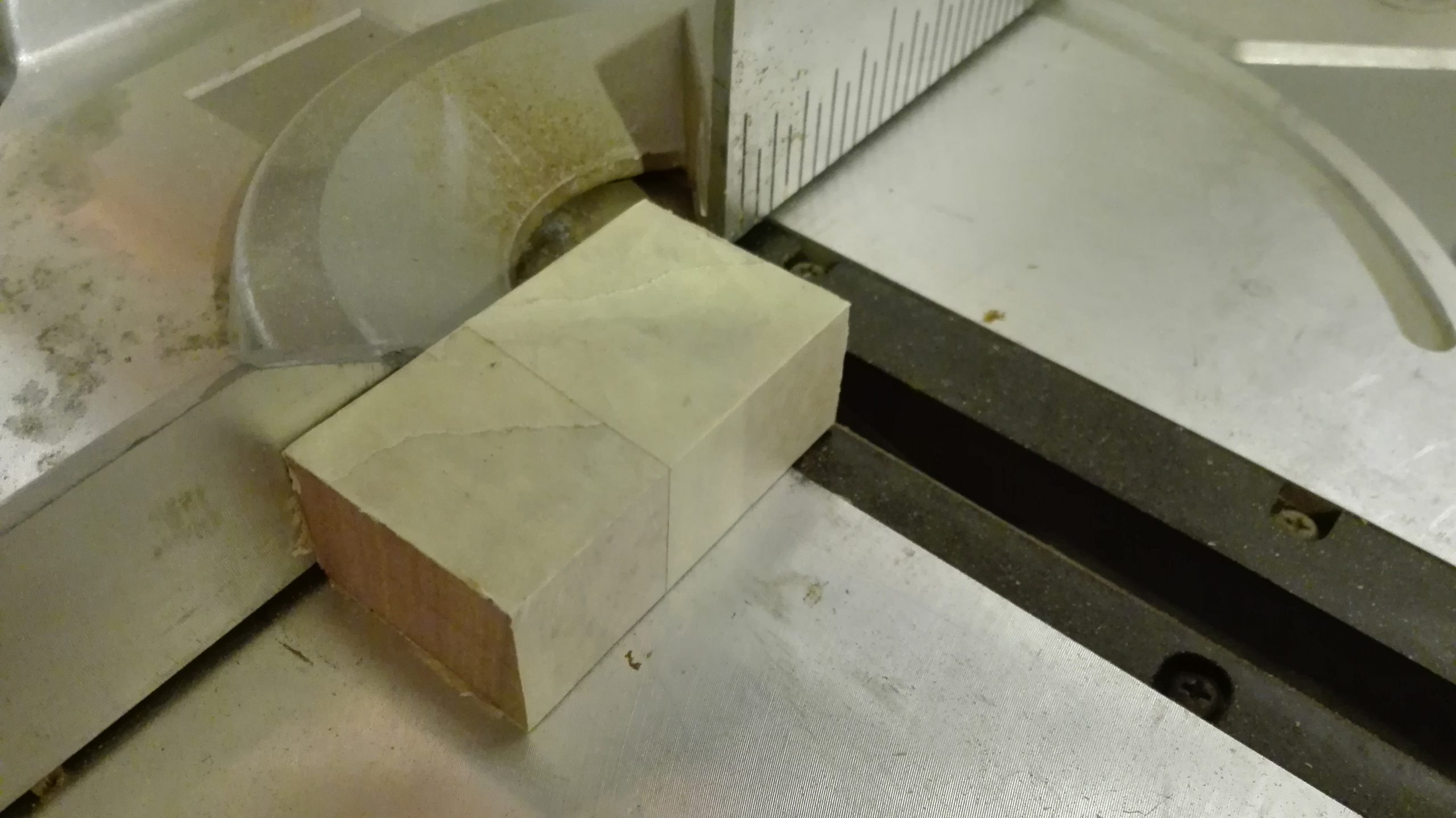
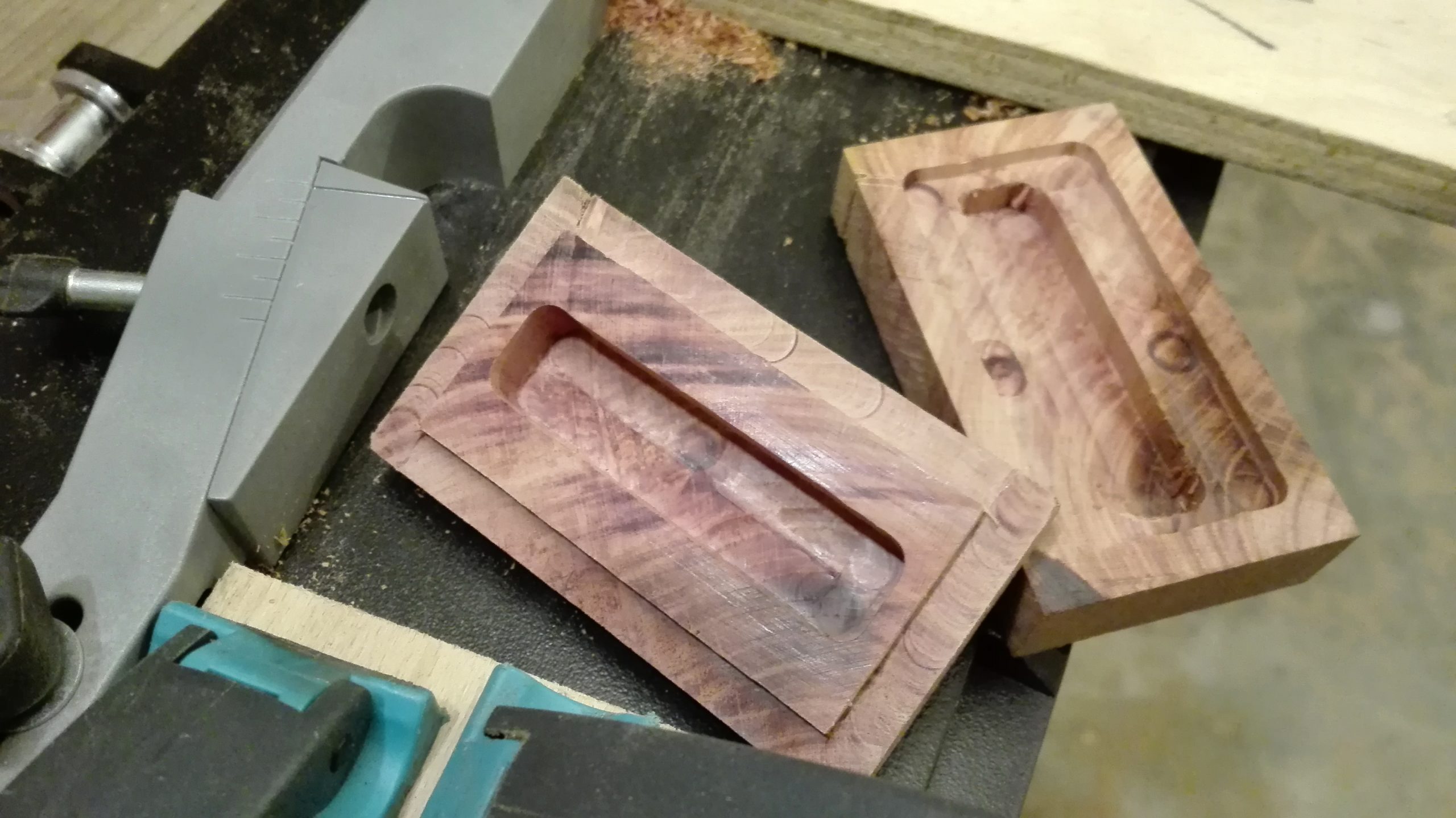
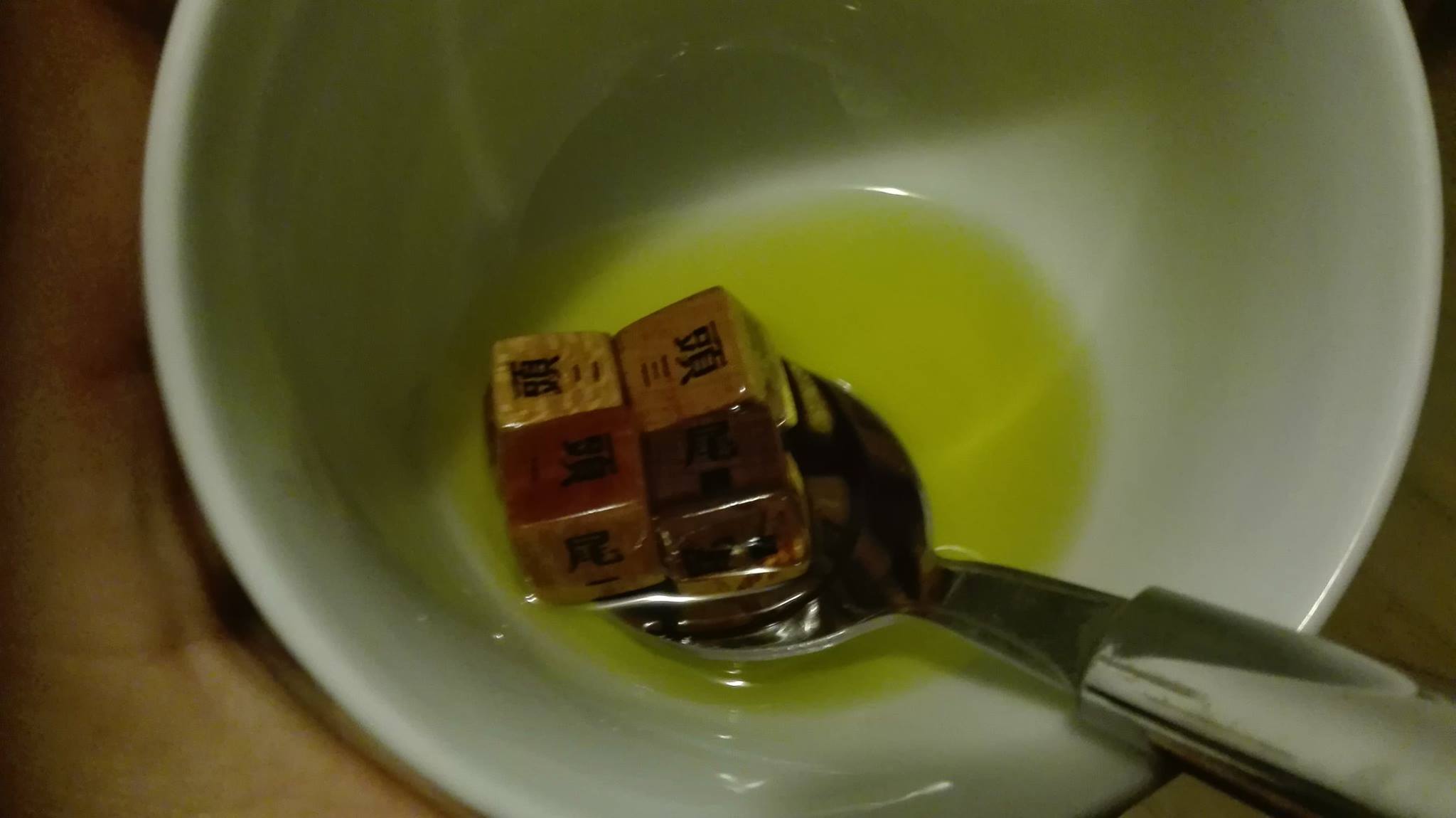
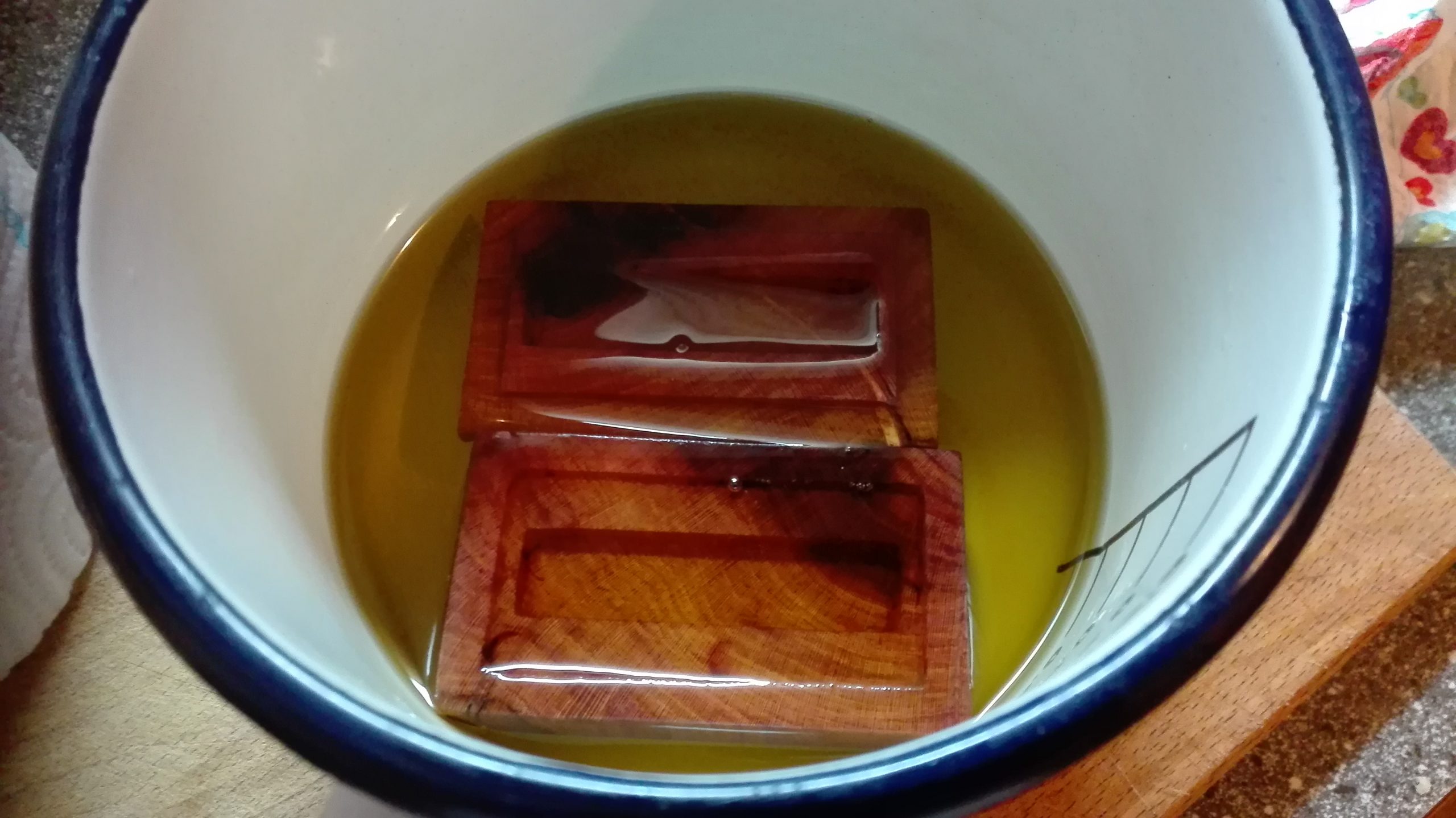
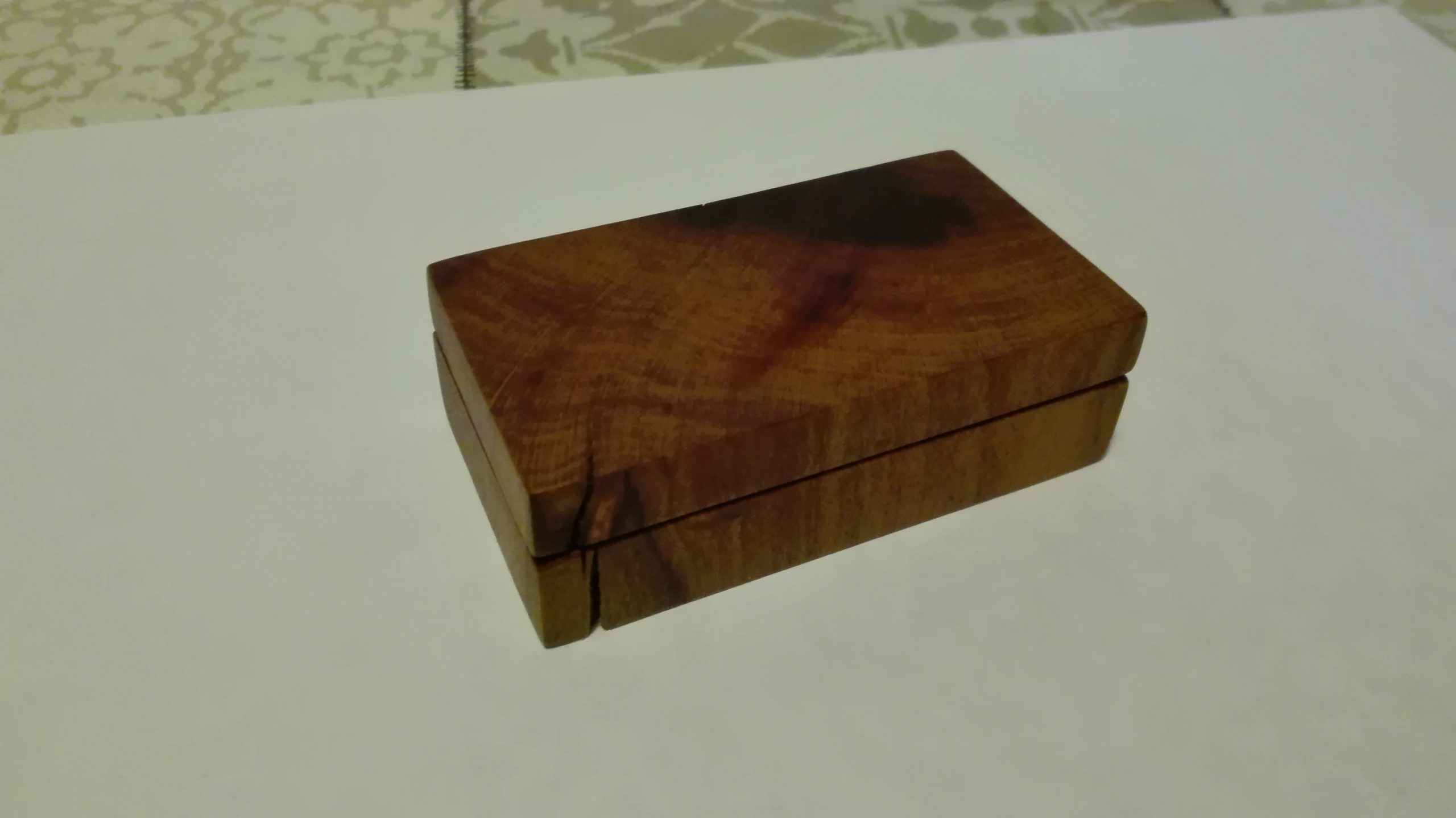
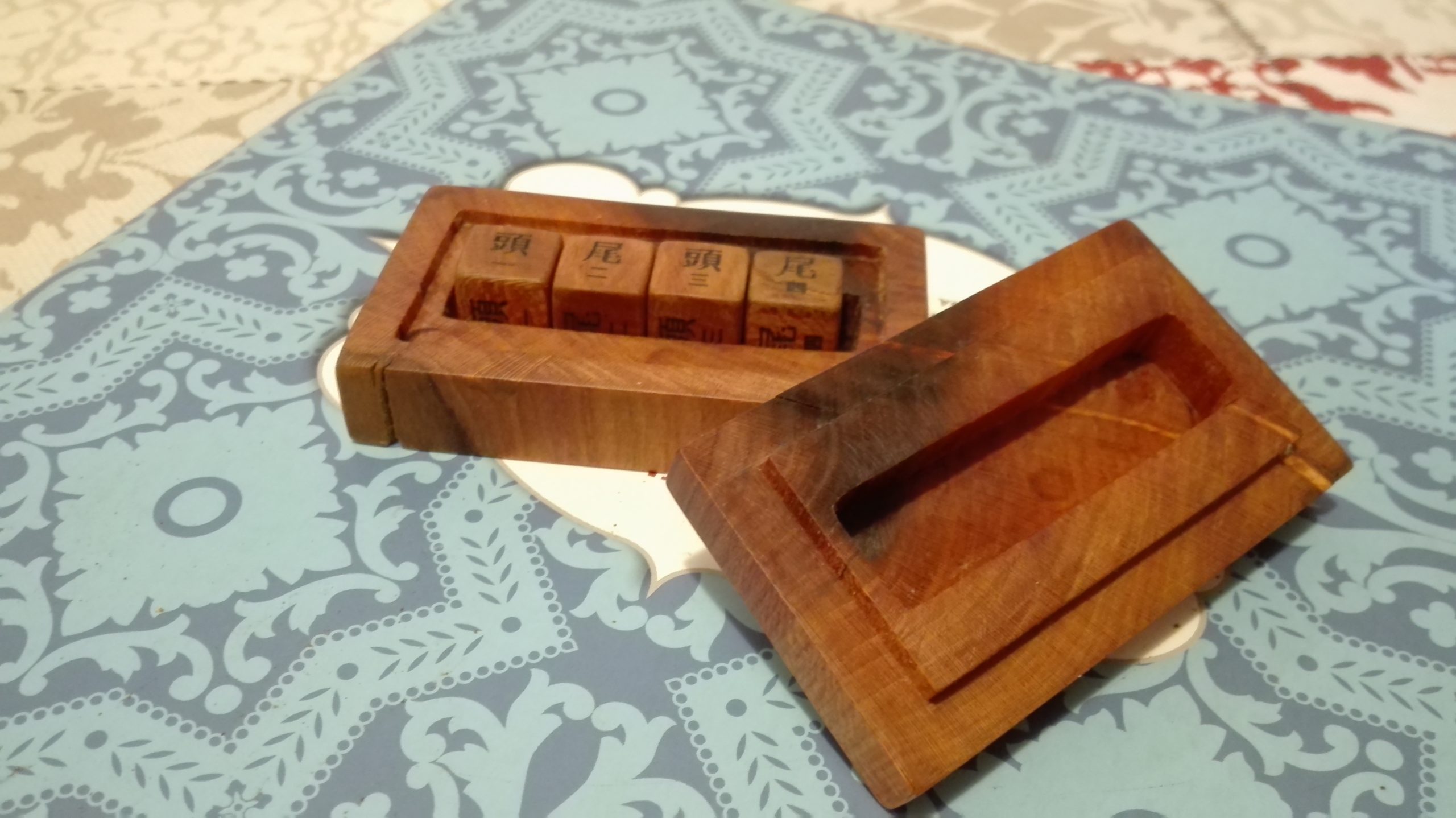
Mathematics and Probabilities
The most traditional method involves 50 yarrow stalks, which are moved, split to groups and further manipulated on the table, following the strict procedure. In the “mathematically ideal” case, where outcomes for each subdivision of the method would be equally probable, the resulting probabilities for the outcomes of the individual hexagram lines would be as follows:
P(6) = 1/16
P(8) = 7/16
P(7) = 5/16
P(9) = 3/16
P(yin) = P(yang) = 1/2
The “yin” and “yang” here denote probabilities of getting each of the two types of line (broken or solid). And the numbers 6,8 and 7,9 denote the partial probabilities of getting the sub-variants of each line type (stable or moving). See the coin method.
Using four six-sided dice, each printed with only two signs (equivalent to four coins), the probability distribution of the “ideal” yarrow stalk method could be replicated in the following way:
Choose one die of the four and remember it (dice are numbered). Then repeat six times:
-
- Roll the four dice at the same time
- If the remembered die is 陽 (yang), draw a line. If it is 陰 (yin), draw a broken line.
- If among the four dices are exactly three 陽, consider it a moving line.
In each step, hexagram lines are drawn from bottom to top.
However, this follows the ideal model of the yarrow stalk method. In reality, the exact probability distribution of the method cannot be sufficiently determined.
Another traditional, yet relatively younger method involves casting three coins, which can be substituted with three dice from the set. In this case, the procedure is:
Roll the three dice six times. Each time, if you get three 陽 (yang), draw a moving yin. If you get three 陰 (yin), draw a moving yang. In any other case, look what the majority dice are and draw the line they represent (陽 for solid yang, 陰 for solid yin).
The hexagram is once again drawn from bottom to top.
To introduce a bit of complexity to the explanation, assign numbers 2 to 陽 and 3 to 陰. Now each time you roll, you get a combination of three numbers. Sum these numbers and you get the value that represents the type of the line you draw. That’s how we come to 6,7,8,9 we are talking about for some time:
6 -> -x- (moving yin)
7 -> — (solid line, yang)
8 -> – – (broken line, yin)
9 -> -o- (moving yang)
The method is equivalent to three-coin method. And it’s probability distribution is:
P(6) = P(9) = 1/8
P(8) = P(7) = 3/8
P(yin) = P(yang) = 1/2
Two possible methods of utilizing the created set for Yijing consultation are described above, aiming to retain outcome probabilities of the traditional methods.
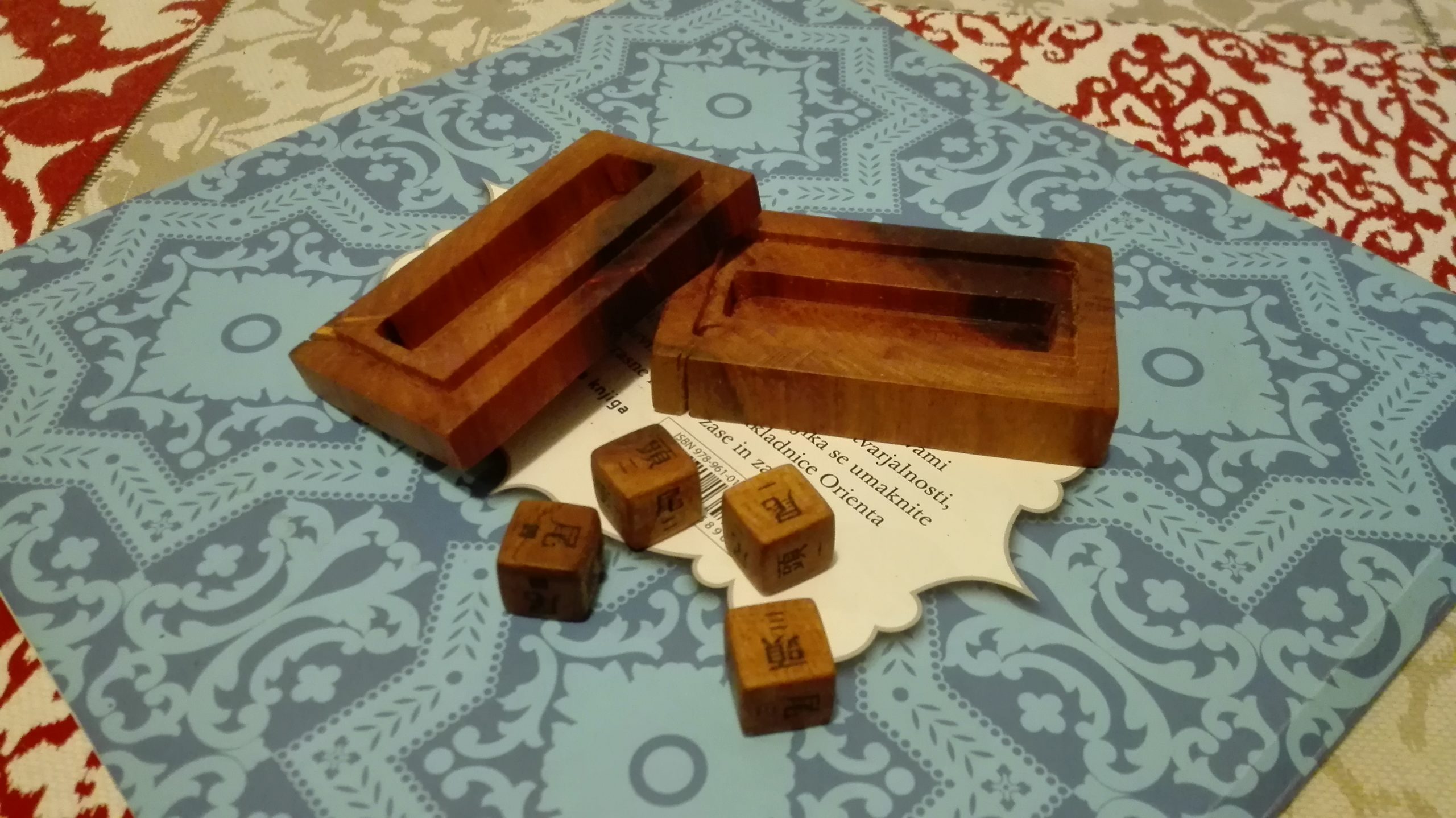
Thoughts on Fairness
A fair rolling die is one that yields the same probability for each outcome, achieved through proper geometric and other properties such as symmetry, weight distribution, choice of material, and symbol distribution. As these wooden dice have been handcrafted in a rustic manner, lacking the precision of advanced manufacturing, it should be noted that they inevitably fail to fully adhere to the principles of fairness. Additionally, none of these dice is truly identical or equal to another. This is a clear disadvantage when pursuing probabilities. On the flip side, it introduces an additional personalized element of unpredictability when blindly selecting a single die for a special role or eliminating one from the roll, as described in the methods above. Thus, in the context of Yijing, it can further open the door to a higher wisdom manifestation through the person consulting the Yijing. Or it can be just a story of a nice souvenir.
I drew inspiration from Yijing methods and mathematics found on Casting I Ching.
All the photos and images on this page, unless otherwise noted, are my work and copyrighted. Any reproduction and use without my prior written consent is prohibited. The same applies for texts.